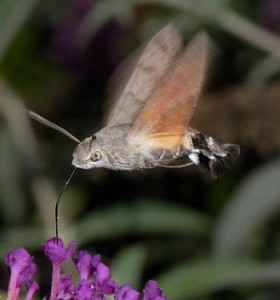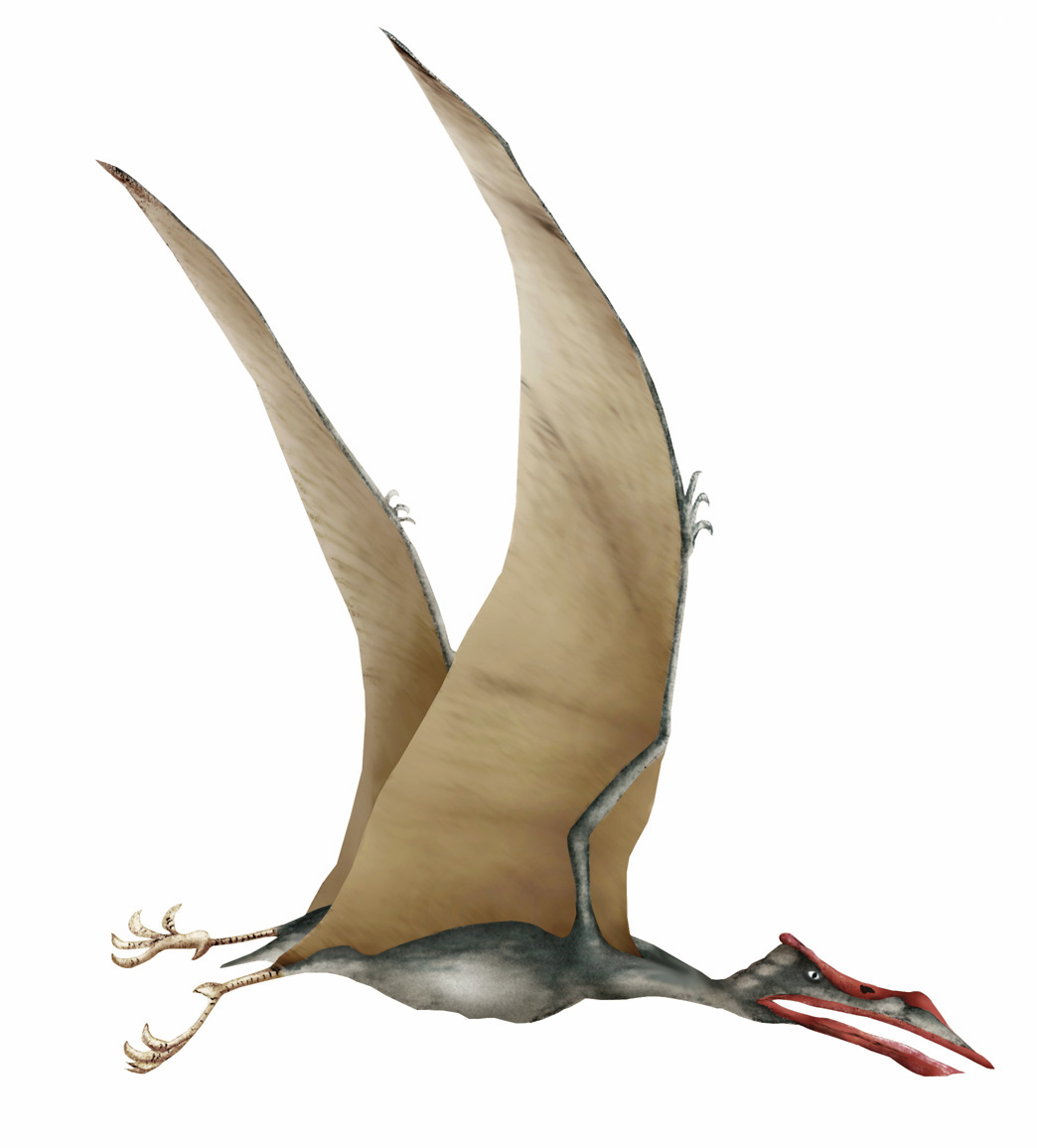December 4, 2012 at 10:18 pm
 When you think of the word hovering, most people think of a hummingbird because of its flight traits. The hummingbird hawk moth, also known as the Macroglossum Stellatarum has a flight pattern very similar to the hummingbird, which is an excellent hovering animal.
When you think of the word hovering, most people think of a hummingbird because of its flight traits. The hummingbird hawk moth, also known as the Macroglossum Stellatarum has a flight pattern very similar to the hummingbird, which is an excellent hovering animal.
Read More »
By Andrew Yoon
|
Posted in Student post
|
December 3, 2012 at 11:10 pm
Many people have heard the tale of bumblebees not being able to fly. How could this be possible? This little white lie was created without any documentation of who made the calculation and when. Read More »
By Catherine Chen
|
Posted in Student post
|
December 1, 2012 at 4:37 pm

Birds capable of hovering has always been a unique and sought out feature that humans have been trying to emulate in our equipment. This hovering capability has finally been successfully captured and implemented with quad-rotor electric craft that have only come out in the past few years in vehicles such as Cyber Technology (WA) Pty Ltd.’s Cyber Quad, which is capable of vertical takeoff like a helicopter. Read More »
By nathanl
|
Posted in Student post
|
November 26, 2012 at 12:43 am

The colugo
Contrary to its name, the flying lemur, or the colugo does not fly, and is not a part of the lemur family as it is actually not part of the primate family. They instead glide, and have been historically considered as being close to the ancestors of bats. They have however, recently been considered by some as the closest living relatives of primates. Read More »
By chevans9
|
Posted in Student post
|
November 25, 2012 at 11:34 pm
While many animals are able to fly, birds are the creatures that have mastered flight. They evolved feathers and an aerodynamic body shape. But how exactly did they evolve the ability for complex flight? Were birds first capable of gliding then modified this advantage into powered flight? Or did they begin flapping their wings while running and evolve flight in this manner?
Proponents of flight from running, such as Kenneth P. Dial, observe the behavior of chukar partridges (Alectoris chukar). Chukar partridges display wing assisted incline running (WAIR), meaning that both young and adults beat their wings vigorously while running up inclines. This motion creates a net aerodynamic force which pushes the bird into the incline, causing greater traction in the hind limbs. Dial argues that this behavior points towards the origin of flight in birds coming from the ground-up.
Read More »
By Virginia
|
Posted in Student post
|
Tagged archaeopterix, chukar partridge, cretaceous, evolution, flight, fossil, gliding, microraptor, sinornsis, wair
|
November 25, 2012 at 5:54 am

Credit: From Flickr, uploaded by scottzona
Many are familiar with the Northrop Grumman B-2 Spirit’s iconic ‘flying wing’ shape. This was the first aircraft to successfully employ the flying wing design. Northrop Grumman chose the flying wing design primarily for its stealth. The flying wing is also very aerodynamically efficient, as the surface of the entire craft is used to produce lift. But like all designs, the flying wing has its downsides. Flying wings lack stability around the vertical and lateral axes. Engineers of the B-2 Spirit used a fly by wire system to ensure the pilot could control the unstable aircraft. However, the flying wing seeds of the tropical vine plant Alsomitra macrocarpa are able to glide smoothly without an active stabilizing system. Perhaps we can learn something about stability from the seed of the Alsomitra macrocarpa. Read More »
By David Miller
|
Posted in Student post
|
Tagged cucumber, dihedral, flying wing, gliding, plant, samara, seed, stability, sweepback
|
November 24, 2012 at 11:15 pm
Being incapable of natural flight, humans have always had their imaginations teased by the animals that take to the skies. Of all the flight methods, gliding is one that upon first-sight seems to defy logic; after all, how can something that has obvious weight just stay in flight without thrust and no immediate source of lift? The evolutionary logic behind its development in forest-dwellers is a bit hard to pin, however. Contrary to first thought, gliding isn't actually as practical as it may seem: it isn't useable for sustained flight, requiring a more taxing amount of energy than lateral movement partly due to needing an initial launch height to glide any sort of meaningful distance. Also, these animals are all part of species that are primarily ground-stricken. This may lead one to the conclusion that gliding may just be a cool, albeit rarely useful evolutionary trait if it requires them so much more energy than just walking. However, evolution gave these gliders some very crafty tricks to get around their environments.
Read More »
By Alex Millward
|
Posted in Student post
|
November 24, 2012 at 7:13 pm
Quetzalcoatlus was a type of pterosaur and is one of the largest flying animal of all time, or was it? A study by Sankar Chatterjee, a Texas Tech University professor, claims that the Quetzalcoatlus would not have been able to fly. Instead the pterosaur would soar and glide in a similar fashion as the albatross. Take-off would have been very difficult.

Read More »
By nelsont
|
Posted in Student post
|
Tagged albatross, dinosaurs, flight, pterosaur, Quetzalcoatlus, takeoff
|
November 24, 2012 at 4:10 pm
Sure, we've all seen Toy Story and Buzz Lightyear's continued attempts at flight. We all know that the wings on his back will never allow him to achieve flight in the functional sense. He has no ability to flap or twist his wings to produce lift or thrust, nor does he have engines like an airplane to propel him through the air. Instead, he can only use his wings for stability, and to add style to his fall. When he finally manages to engage in a prolonged flight he calls it "falling with style". In reality, he is not very far off. Buzz finds his ability to glide, an action that essentially is a fall, a controlled fall, but a fall nonetheless. Read More »
By Anthony
|
Posted in Student post
|
Tagged falling, gliding, mammals
|
November 24, 2012 at 2:53 pm
While the day has yet to come where pigs are able to fly, many unique animals have evolved over time to allow for flying and gliding capabilites. Some of these strange creatures include the flying fish, flying squirrel, and gliding lizard. These animals are not quite capable of flight on their own, but have adapted to their environments by learning how to glide.

- The dipterocarp tree found in Southeast Asia
By Patrick Leach
|
Posted in Student post
|
 When you think of the word hovering, most people think of a hummingbird because of its flight traits. The hummingbird hawk moth, also known as the Macroglossum Stellatarum has a flight pattern very similar to the hummingbird, which is an excellent hovering animal.
When you think of the word hovering, most people think of a hummingbird because of its flight traits. The hummingbird hawk moth, also known as the Macroglossum Stellatarum has a flight pattern very similar to the hummingbird, which is an excellent hovering animal.



